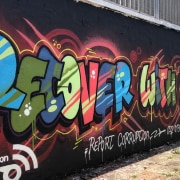|
Getting your Trinity Audio player ready...
|
Corruption is never beneficial – except to a self-serving few – but it adds an extra, unwanted challenge to those already facing South African youth, writes Mzwandile Banjathwa, Corruption Watch’s project coordinator. Unemployment is one of the biggest concerns, but when the very agencies that are tasked with helping young people gain skills and find opportunities are themselves plagued by corruption, secrecy and non-disclosure, what then?
By Mzwandile Banjathwa
This year South Africa marked 45 years since the devastating 1976 Soweto student protests, where schoolchildren rose up against the apartheid regime and the introduction of Afrikaans as a mandatory language of teaching. Today’s youth are still fighting for a better future, and though their challenges are not the same, they are no less urgent.
The continuing rise in the unemployment rate, as recorded by Statistics South Africa (Stats SA), is one of the youth’s gravest concerns. In its second Quarterly Labour Force Survey (QLFS) of the year, released on 24 August, 2021 Stats SA posted an unemployment rate of 34.4%, up from the first quarter’s 32.6%. This made the country’s unemployment figures the highest on a list of 82 countries monitored by Bloomberg.
The QLFS is a household-based sample survey that collects data on the labour market activities of individuals aged 15 years and older who live in South Africa. The latest survey revealed an unemployment rate of 44.2% for youth between the ages of 15 and 34 years – up from 43.6% in the first quarter. The realisation that almost one in two young South Africans are currently unemployed, is sobering.
Empowering our youth
Several youth empowerment initiatives established over the years come to mind when such figures surface. They include:
- the Youth Employment Tax Incentive, administered by the South African Revenue Service;
- the Skills Development Levy, under the Sector Education Training Authority (Seta) and the National Skills Fund;
- the Youth Employment Service, which is linked to the BBBEE scorecard of the Department of Trade and Industry; and
- the National Youth Development Agency (NYDA).
These entities are meant to help young people gain the skills and experience needed to start their business enterprises or be employable, and to assist in driving the economy forward. They aim to catch as many disadvantaged youth as possible, within the confines of structured government programmes that advance the developmental agenda. But when they fail, they do so at the expense of the same young people, closing the doors to the very opportunities that could emancipate those in whom we invest hope for the future.
But they could work well by developing governance tools that preserve the confidence of young people, and instil a culture of doing business that puts transparency and accountability at the top of the list of priorities.
Controversy, opacity and mismanagement
Corruption Watch has received numerous whistle-blower reports detailing allegations of corruption and mismanagement at several of these programmes, particularly the Seta initiatives. They range from the misappropriation of funds and unapproved top management bonuses, to the funding of ghost employees and organisations associated with the authority. A starkly common feature among the whistle-blower reports is a lack of anti-corruption policies within the institutions, resulting in these incidents growing in number and seriousness. It also means accountability measures are not in place to ensure good governance in key areas of their operations.
The NYDA too is no stranger to controversy, particularly when it comes to its track record in advancing the interests of young people in skills development and in the economy. The organisation has for some time found itself at the centre of corruption scandals including the nepotistic appointment of those who are politically connected. Furthermore, the very selection process for the oversight of the agency has come under scrutiny, with claims of compromised individuals at its helm. The agency is a very important vehicle in mainstreaming youth issues into broader government policy and programmes, but due to political entanglements, it is stuck, and used as a tool for political patronage.
Lack of transparency is a huge concern in most of these public institutions. It is therefore important that organisations like the NYDA be held to the principle of transparency in their affairs, particularly to the young people they are mandated to serve. Otherwise corruption emanating from lack of transparency will only grow as an added challenge for disadvantaged youth.
For instance, although the NYDA claims to have within its structure a monitoring and evaluation mechanism of its programmes, it appears to operate in the same vein of obscurity as the presidential anti-corruption hotline. Such initiatives become mere tick-box exercises as opposed to the performance-measuring mechanisms that they should be. For the country to know if the hotline is successful or not, the data from its performance-measuring mechanism has to be made available. If not, people can’t know if the hotline works or not, and may be hesitant to use it. It would be great to know how many reports are received, what’s done about them, how many officials have been or are being investigated, how many have been suspended, and better yet, how many cases have been referred to the criminal justice authorities.
The same principle applies to the NYDA, which currently publishes its list of beneficiaries annually, including names of entities, their location, who owns them and the kind of assistance they’ve received. This is a great step, though one wonders why the agency does not divulge amounts in funding allocated to each entity; what support, if any they continue to receive in the interest of skills development, or the overall measurable progress of the entity.
Meanwhile, the Integrated Youth Development Strategy has been finalised. This document informs the National Youth Policy, whose implementing agency is meant to drive youth development by young people for young people until 2030. It is hoped that the strategy will move young people from a point of despair to obtaining or developing skills which open up opportunities to fully participate in the country’s economy as business entrepreneurs, social entrepreneurs and employees, who could drive the country forward.
However, such youth-orientated strategies are pointless if they merely engage passively on the issues corruption, accountability and transparency.
The fight against corruption should form part of our generational mission of development and economic emancipation, with accountability for each rand spent in our name as young people being a common feature of all institutions with a youth mandate. Transparency in the spending of funds would build trust between young people and these agencies and make young people feel that they are part of the solution. Perhaps this could lead to a steady and promising decline in the Stats SA unemployment figures.







